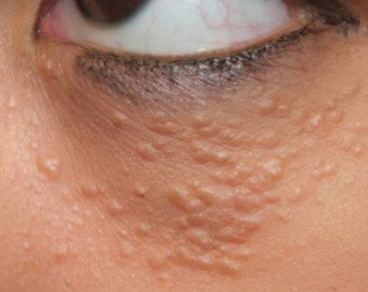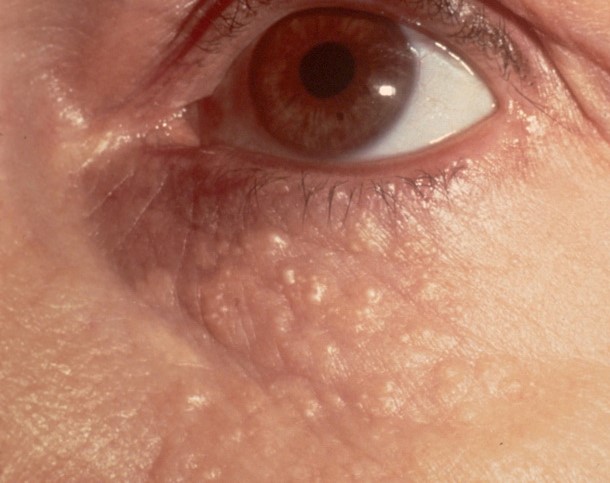What is syringoma best treatment ?
SYRINGOMA :
Syringomas are a cluster of bumps on your skin that are either yellow or the same color as your natural skin tone. These bumps form because your sweat glands (eccrine glands) are overworking. These bumps are harmless and don’t need treatment but you can talk to your provider about removal if you don’t like how they look on your skin.
WHAT ARE THE TYPES OF SYRINGOMA ?
There are four types of syringoma:
- Localized: Bumps only appear on one area of your body. This is the most common type of syringoma and isn't associated with any other medical condition.
- Associated with Down Syndrome : Bumps are the result of genetic changes that happen to your body if you’re diagnosed with Down syndrome.
- Generalized (eruptive syringomas): Bumps can appear on multiple different parts of your body and are common among adults.
- Familial: You can inherit this type of syringoma from your biological parents.
An overgrowth of cells in your sweat glands, also known as the eccrine glands, causes syringoma. Your eccrine glands are sweat glands in your skin. When your body gets warm, your eccrine glands produce sweat to cool your body down.
Several physical and environmental factors can make your eccrine glands overwork and overgrow including:
- Stress.
- Exercise or physical activity.
- High temperatures.
- Genetic changes or mutations.
- A symptom of a medical condition.
Syringomas usually appear as small bumps that grow between 1 and 3 millimeters. They are either yellowish or flesh-colored. They typically occur in symmetrical clusters on both sides of your face or body.
Eruptive syringomas are usually found on your chest or abdomen and appear as multiple lesions occurring at the same time.
Syringomas aren’t itchy or painful and are usually asymptomatic. Symptoms of syringomas include:
- A round bump (papule) that’s 1 to 3 millimeters in diameter.
- The papule is firm.
- The papule is yellow, translucent or the same color as your natural skin tone.
- The papule is part of a group or cluster of papules of a similar size, shape and color.
Medication
Small drops of trichloroacetic acid applied to syringomas makes them shrivel and fall off after a few days. In some cases, a doctor may prescribe isotretinoin (Sotret, Claravis) to take orally. There are also creams and ointments that can be purchased over the counter and used to improve the skin around the syringomas, which can help with their appearance. However, these methods aren’t considered to be as effective as surgery.
Treatment is to improve the appearance of lesions, since they are otherwise not serious and typically do not cause symptoms. Many treatment methods have been attempted, but complete removal is uncommon. No single treatment method has been shown to work consistently. Both medical and surgical treatments have been studied, each with variable success. Common destructive treatment methods include carbon dioxide lasers, dermabrasion, surgical excision, electrocoagulation, and chemical peels.
Surgery
There are several different surgical approaches to treating syringomas.
Laser removal
This treatment is preferred by many doctors, because of all the procedures possible, this one has the lowest risk of scarring. Your doctor will use carbon dioxide or erbium to laser the syringoma.
Electric cauterization
In this treatment, an electrical charge is passed through an instrument similar to a needle to remove the tumors by burning them.
Electrodessication with curettage
This procedure is similar to electric cauterization, but the doctor will also scrape the growths after burning them.
Cryotherapy
This is more commonly referred to as freezing the tumors. Liquid nitrogen is the most often used chemical for this procedure.
Dermabrasion
This involves using abrasive substances to rub off the upper layer of your skin, including the tumors.
Manual excision
Syringomas may also be treated by cutting them out using surgical instruments such as knives, scissors, or scalpels. However, this procedure carries the greatest risk of scarring.



Comments
Post a Comment